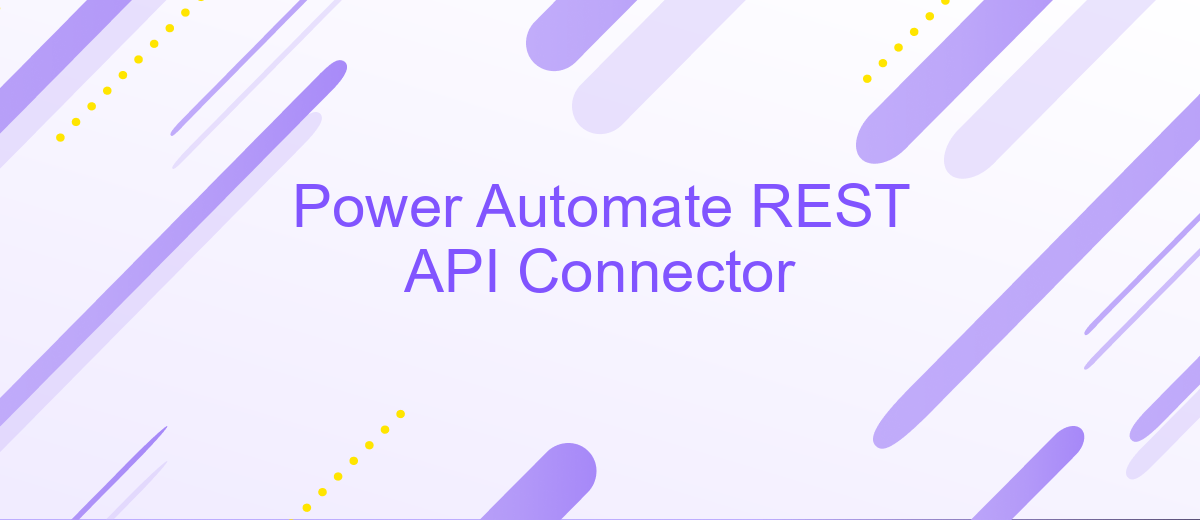Power Automate REST API Connector
Power Automate REST API Connector is a powerful tool that enables seamless integration and automation of workflows across various applications and services. By leveraging REST APIs, users can create, manage, and optimize automated processes with ease, enhancing productivity and efficiency. This article explores the key features, benefits, and practical applications of the Power Automate REST API Connector, providing insights into how it can transform your business operations.
Introduction
Power Automate REST API Connector is a powerful tool that enables users to automate workflows by connecting various applications and services through RESTful APIs. This connector allows for seamless integration, enabling businesses to streamline operations, reduce manual tasks, and enhance productivity. By leveraging the capabilities of REST APIs, users can create, manage, and monitor automated workflows with greater flexibility and efficiency.
- Connect with a wide range of applications and services using RESTful APIs.
- Automate repetitive tasks to save time and resources.
- Enhance workflow efficiency by integrating diverse systems.
- Monitor and manage workflows with real-time data insights.
- Facilitate seamless communication between different platforms.
Integrating Power Automate with REST APIs opens up a world of possibilities for businesses seeking to optimize their processes. Whether it's automating data transfers, triggering actions based on specific conditions, or connecting disparate systems, the REST API Connector provides the tools necessary to build robust and scalable workflows. By embracing this technology, organizations can achieve higher levels of efficiency and innovation in their operations.
Authentication

When working with the Power Automate REST API Connector, authentication is a critical step to ensure secure access to your resources. The connector requires OAuth 2.0 authentication, which is a widely used protocol for securing API access. To begin, you must register your application in the Azure Active Directory (Azure AD) portal, obtaining a client ID and client secret. These credentials are essential for acquiring an access token, which grants you permission to interact with the API.
Once your application is registered, you can use services like ApiX-Drive to simplify the integration process. ApiX-Drive offers tools to manage API connections and automate workflows without extensive coding. By leveraging ApiX-Drive, you can streamline the authentication process, ensuring that your application securely communicates with the Power Automate REST API. This service provides an intuitive interface to manage your OAuth 2.0 credentials, helping you focus on building efficient automation solutions. Remember to keep your client secret secure and refresh your tokens regularly to maintain uninterrupted access.
HTTP Methods

Understanding HTTP methods is crucial when working with the Power Automate REST API Connector. These methods dictate the type of operation that will be performed on the server. Each method serves a unique purpose and is used in different scenarios to manipulate resources effectively. Familiarity with these can enhance your ability to integrate and automate processes.
- GET: Retrieves data from the server. It is a read-only operation and does not alter the state of the resource.
- POST: Sends data to the server to create a new resource. This method can change the server state and often involves data submission.
- PUT: Updates an existing resource on the server. It is idempotent, meaning repeated requests will have the same effect.
- DELETE: Removes a specified resource from the server. This operation is irreversible and should be used cautiously.
By leveraging these HTTP methods, users can effectively interact with the Power Automate REST API Connector, enabling seamless automation and integration of various services. Each method's correct application ensures that operations are performed efficiently and accurately, aligning with the intended outcomes.
Common Parameters

When working with the Power Automate REST API Connector, understanding common parameters is essential for seamless integration and functionality. These parameters are fundamental components that define how API requests are structured and processed, ensuring consistent communication between applications.
Typically, these parameters include authentication details, request headers, and specific query parameters that help tailor API responses to meet your unique requirements. By configuring these parameters correctly, you can optimize the performance and reliability of your automated workflows.
- Authentication: Provides the necessary credentials to access the API securely.
- Headers: Define the content type and other metadata for the API request.
- Query Parameters: Allow you to filter and sort data based on specific criteria.
- Timeout: Sets the duration before a request is terminated if not completed.
Understanding and utilizing these common parameters effectively can significantly enhance the capabilities of your Power Automate solutions. By ensuring that each parameter is appropriately configured, you can achieve a higher level of precision and control over your automation processes, ultimately leading to more efficient and effective outcomes.
- Automate the work of an online store or landing
- Empower through integration
- Don't spend money on programmers and integrators
- Save time by automating routine tasks
Sample Requests and Responses
When working with Power Automate REST API Connector, crafting sample requests and understanding responses is crucial for seamless integration. For instance, to retrieve a list of flows, you can send a GET request to the endpoint https://api.flow.microsoft.com/v1.0/environments/{environmentName}/flows. Ensure you include the necessary headers such as Authorization with a valid bearer token. A successful response will return a JSON object containing details about each flow, like id, name, and properties. This information allows developers to programmatically manage and monitor their workflows.
For those seeking to streamline integration setups, leveraging services like ApiX-Drive can be beneficial. ApiX-Drive offers tools to automate data transfer between various platforms, reducing manual effort and potential errors. By connecting Power Automate with ApiX-Drive, users can automate the synchronization of data, ensuring that workflows are always up-to-date. This integration not only saves time but also enhances the reliability of automated processes. Thus, understanding sample requests and responses is fundamental, and utilizing integration services can further optimize workflow automation.
FAQ
What is Power Automate REST API Connector?
How do I authenticate API requests in Power Automate?
Can I use Power Automate REST API Connector to integrate with third-party applications?
What are some common use cases for Power Automate REST API Connector?
How can I simplify the setup of Power Automate integrations?
Apix-Drive is a simple and efficient system connector that will help you automate routine tasks and optimize business processes. You can save time and money, direct these resources to more important purposes. Test ApiX-Drive and make sure that this tool will relieve your employees and after 5 minutes of settings your business will start working faster.


